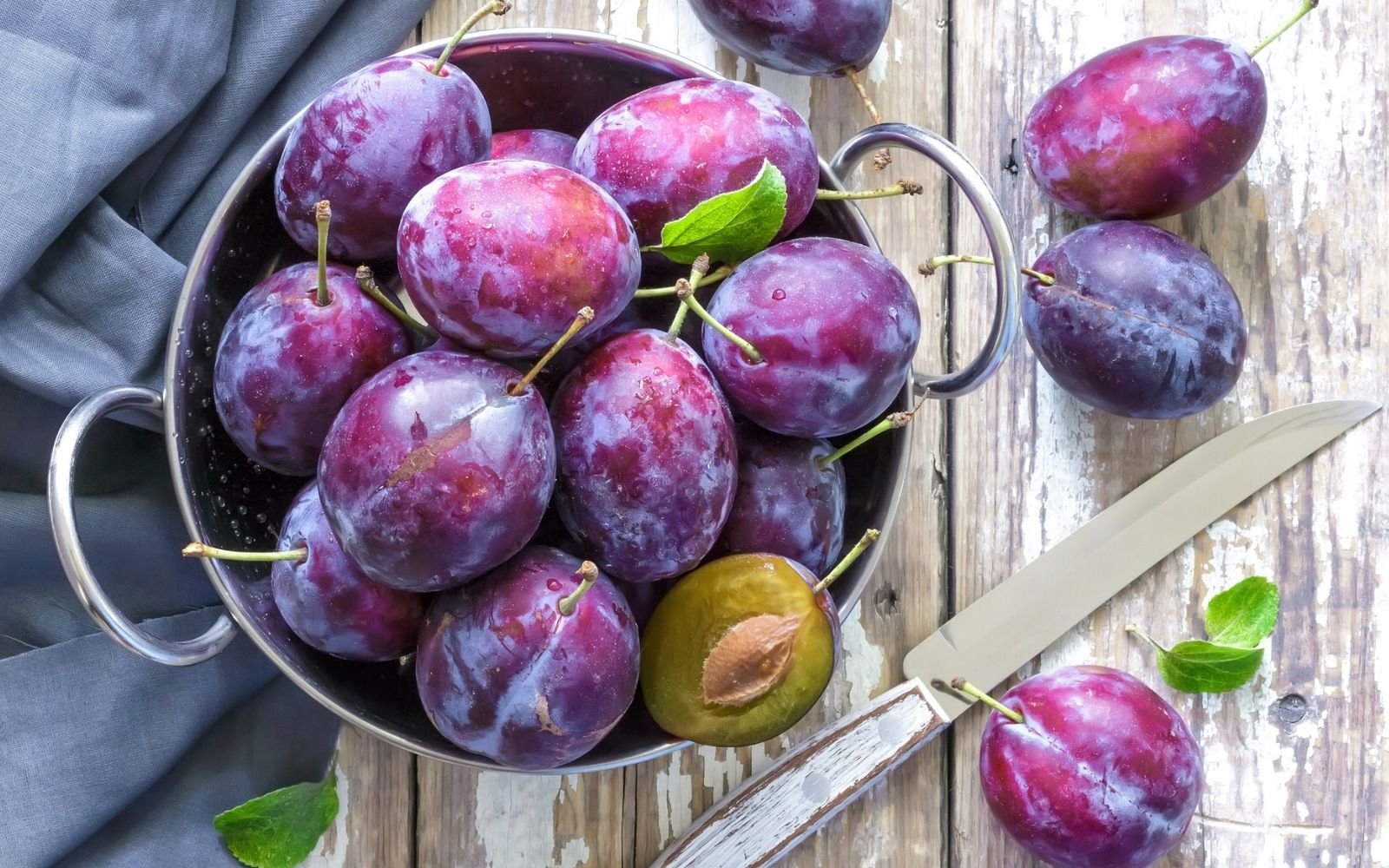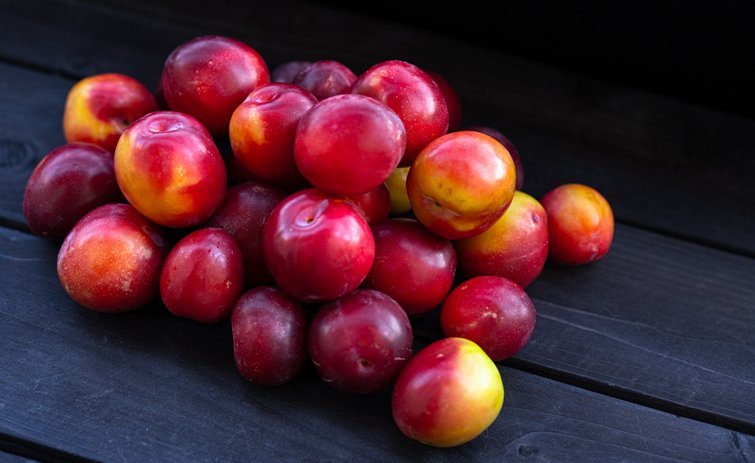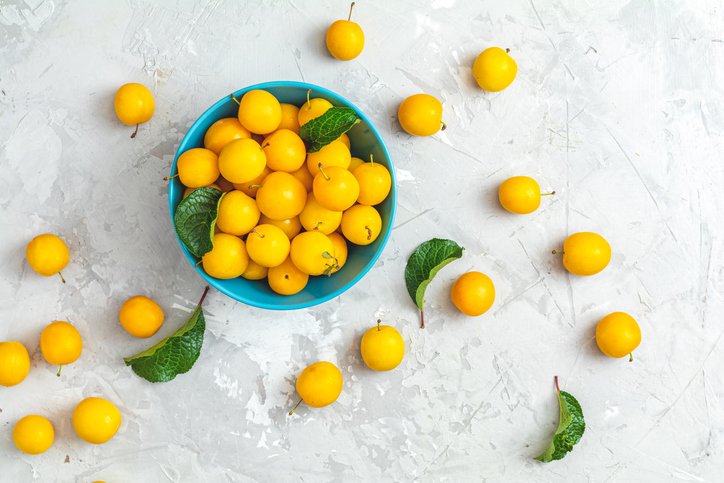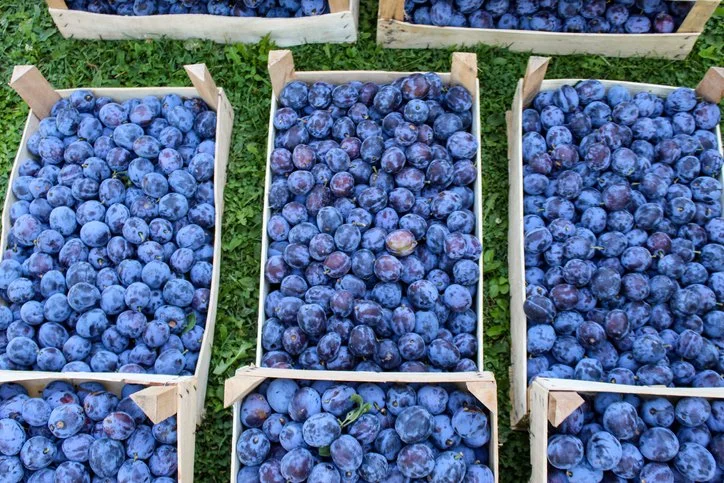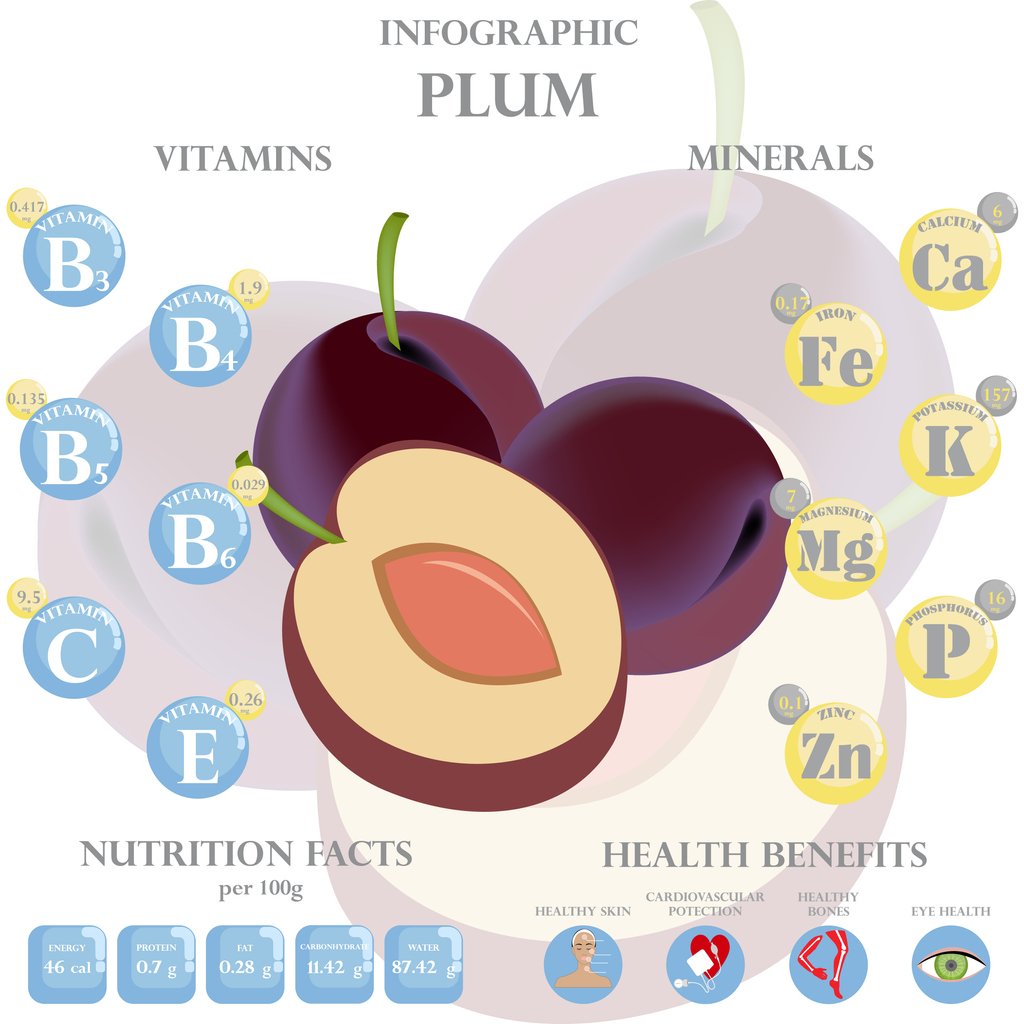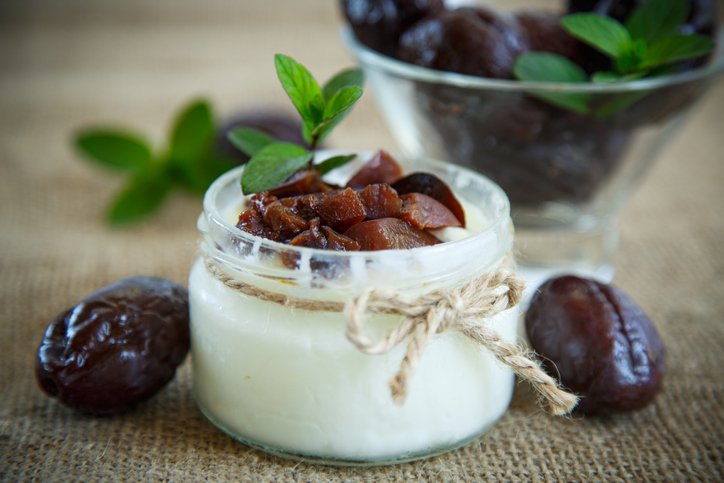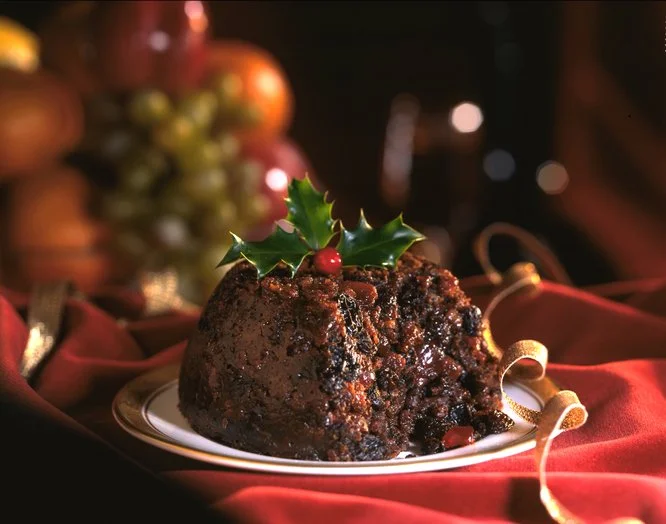Plums – Exploring Health Benefits, Varieties, and Recipes!
Discover > Texas Home Cooking > Plums – Exploring Health Benefits, Varieties, and Recipes!
Plums are small but mighty when it comes to flavor and nutrition. Over the years, the plum’s meaning has been built on a sweet and tangy punch, and their nutritional value means they are a healthy source of several vitamins and minerals. Whether you enjoy them fresh, baked into pies or jams, or dried as prunes, plums are a versatile fruit with numerous health benefits. And what's more, they're in season in Texas, so you should be able to find them at your local Farmers Markets!
A Quick Guide to What's in Season in Texas
Explore the vibrant flavors of Texas with this quick guide to what's in season. Discover the freshest produce and ingredients for your Texas-inspired culinary adventures.
When are Plums in Season?
Considered a summer fruit, plums season runs from May to October. Because they are stone fruits, they are only good in season.
Buying plums in season is not only beneficial for your recipes but is also good for the environment. It can save you on cost. Plus, your meals will taste a lot better.
Since they are in season, they are widely found. Thus, the cost is lower as all markets and stores have deals and offers.
Guide to Different Types of Plums
Now, with the dizzying number of names of plums out there (roughly 300 or so), it wouldn't be wise to talk about all of them in this post; we’re just going to focus on the ones you can find locally. In Texas, the two main plum types are Japanese and European, with the Japanese plum being the dominant/popular type of plum. Of course, that doesn't mean you won't find these other plum varieties at your local market!
A Quick Guide to What's in Season in Texas: Stay informed about the freshest produce with our quick guide to what's in season in Texas, helping you make the most of local, seasonal ingredients for delicious home-cooked meals.
Japanese Plums
Japanese plums were originally native to China but found popularity in Japan, where they've grown and been used for over a thousand years. Japanese plums found their way around the world during the 16th century when missionaries and traders from China explored the world. As they traveled the world, so did the seeds of the plums!
Second to peaches and nectarines they're the most abundant stone fruit in Texas. Although they're very popular in the state, they don't rank in national production statistics in the United States. Now that I think about it, that's a good thing! This just means that plums that you spot in your local farmers market have been locally grown just for us by our local farmers!
What do Japanese Plums Taste like?
The Japanese plum is the perfect plum for eating. It's a naturally sweet fruit that's best eaten straight off the tree when they're ripe and in season. They're smooth skinned and pretty firm, and the color is that of a beautiful dusky yellow when fully ripe.
As a general consensus, Japanese plum flavor is likened to that of a combination of peaches and apricots. The flesh is sweet and juicy to the point that some even say that it's like you're drinking and eating at the same time!
Making the Best Seasonal Food, Texas Style
Unleash the true essence of Texas in your kitchen by making the best seasonal food with a distinct Texan flair. Elevate your culinary creations with the richness of local, seasonal ingredients.
European Plums
European plums or as the folks here at TexasRealFood lovingly call them "fresh prunes" arrre primarily grown as prune plums, to be dried into prunes. Their thick skins, high sugar (how long does sugar last?) content, and dense flesh makes them perfect for drying into prunes, baked into pies, and turned into jam. Basically every type of cooked plum application calls for the use of European plums.
"Gage" Plums
A European plum sub-variant, Gage plums like the Old Green Gage and Golden Gage plums are the exception to the European Plum family. Unlike other European Plums that are well suited to drying and cooking, it would be a shame to cook these plums. Due to their exceptional sweetness and flavor, eating Gage plums are a treat that one should experience at least once!
Other Notable Plum Varieties and Plum Cultivars
Here are some of the types of plums and plum cultivars you might run across at your local market. Local growers love to get specific with their plum varieties so it's best to know them so that you'll know what to expect when shopping for plums.
Making the Best Seasonal Food Texas Style: Explore the art of making the best seasonal food, Texas style, with our guide to utilizing local, fresh ingredients that capture the flavors of the Lone Star State in every bite.
Cherry Plums
Cherry plums are known for their bright and and bold flavor profile. Their tart flavor balances its acidic sweetness which makes them the perfect plum type for those that are looking for that sweet and sour taste.
Moyer Plums
Moyer plums are some of the largest varieties of plums. A type of European plum, Moyer plums are very disease resistant and are known to have very abundant yields. If you're looking for extra-large prunes or if you want to make plum pie without dealing with too many pits then go ahead and grab some Moyer plums.
Lemon Plums
As their name implies, lemon plums actually resemble lemons! Not only that, but they also have a hint of a lemon taste combined with the traditional plum taste. The flesh is also a bit different from other Japanese plums with it having a bit of a crisp texture when slightly underripe and softens the more the lemon plum ripens. They're best eaten raw, sliced thin, and sprinkled with a little bit of sea salt (how long does sea salt last?) to bring out the best flavor and to counter the tang.
Plumcots
Also known as pluots (we have a whole article dedicated to pluots and plumcots near me) these are hybrids of plums and apricots. They have become immensely popular due to their sweet flavor but without the bitterness that comes with your regular Japanese or European plums. Another high point for this plum is that they have smaller pits than their counterparts, so you'll get more sweet plum flesh and more of the pluot fruit benefits that more and more people enthuse about.
Blood Plum
Blood plums are a type of Japanese plum that's known for its blood-red color. They're very tasty but the texture is quite firm, making it hard for most people to consume. But if you are able to eat them, they're quite a sweet treat!
Elephant Heart Plum
Hear-shaped and with a deep red color, the elephant heart plums are known for their floral plum fruit flavor with nice tart undertones. Perfectly ripe elephant heart plums also have a pleasing sweetness to them. As a nice bonus, the seeds or pits doesn't cling to the flesh of the plum (think something like an avocado) making it quite easy to eat.
Which Type of Plum is the Sweetest?
Technically speaking, the sweetest plum is the Mirabelle plum. Why they weren't on the list before is a story on their own! See, Mirabelle plums have import restrictions on them placed by the French government. Just like certain food like parmesan, champagne, and many more, Mirabelle plums can only be imported from one location, and that's from Lorraine, in France.
While this may sound like a harsh restriction, it is done as a way to protect centuries-old farming traditions. Now, if you ask us, this is one type of restriction that we can stand behind. Sure, you can find Mirabelle plums grown by enthusiasts in Texas, but don't expect to find them in any commercial quantity at your local markets.
Now that Mirabelle plums are no longer in the picture, the answer to which type of plum is the sweetest can boils down to subjectivity. If you look at it from the nutritional content standpoint, Green Gage or Greengage plums contain the highest sugar content of all the plums, but they're balanced out by the acidity. Toka Plums on the other hand, don't have as much sugar in them but it doesn't have the signature acidity of plums, making them taste sweeter than other varieties! In general, when comparing red vs black plums, black plums tend to be sweeter, while red plums contain more acid and therefore have a more tart taste.
So what's the answer to which plum is the sweetest? It all boils down to your taste! As you local farmers market vendor for recommendations and they'll be more than happy to help you find the sweetest plums!
Where to Buy Plums?
Especially when they're in season, a visit your to local farmers market is where you can find the freshest local plums. You can also check out our plum information page where you can search for U-pick and Pick your own farms that offer plums in season. Or if you opt for it, you can buy pre-made plum jellies, jams, and sauces from your local artisan food vendors at the market as well!
How to Select the Best Plums
While certain variants of plums have different levels of sweetness, a good rule of thumb when picking plums is that the darker the skin's color, the sweeter they are.
Choose plums that are firm but have a little bit of "give" to them. Avoid plums that are too soft as these tend to be overripe.
It is worth noting that plums continue to ripen well after they've been picked, but for optimum sweetness, nothing beats the sugar and flavor development from tree-ripened plums.
How to Store and Freeze Plums
To store plums, place them in a plastic bag and store them in the refrigerator. They should keep for about 2 days. If you need to store them for longer, you can freeze them. To freeze plums, wash and slice them first. Then, place them on a baking sheet lined with parchment paper and freeze for about 2 hours. Once they're frozen, transfer them to a freezer-safe bag or container.
How to Cook and Prepare Plums
When it comes to cooking with plums, there are endless possibilities. You can add them to pies and jams, bake them into cakes (how long do cakes last?) or muffins, or even grill them! If you're looking for a healthy snack, try slicing up a plum and adding it to your yogurt or oatmeal. You can also dry plums and add them to granola (how long does granola last?) or trail mix (how long does trail mix last?). And of course, you can always just enjoy them fresh.
No matter how you enjoy them, make sure to take advantage of plums while they're in season!
Health Benefits of Plums
So, how are plums good for me and what are the advantages of plums? Plums are a good source of vitamins and minerals like Vitamin C, potassium, phosphorus, vitamin A, vitamin K, magnesium, and fiber. They also contain phytonutrients like polyphenols and carotenoids, which have powerful antioxidant effects. This means that plums can help protect your body against damage from free radicals, which are linked to chronic diseases like heart disease and cancer. The health benefits of black plums have been suggested to improve the immune system’s performance and help maintain good skin. So overall, there are many plum benefits, and side effects are few and far between, so for once feel free to enjoy this delicious fruit.
What's in Season: Plums - Exploring Health Benefits, Varieties, and Recipes: Delve into the world of plums with our guide to what's in season, exploring the health benefits, varieties, and providing delicious recipes to make the most of this seasonal fruit in Texas.
But the health benefits of plums don't stop there. Here are a few more ways that plums can benefit your health:
Plums and Your Heart
The antioxidants in plums can help reduce your risk of heart disease by keeping your arteries healthy and preventing plaque buildup. Plums also contain potassium, which is a mineral that helps regulate blood pressure.
Plums and Your Blood Pressure
Potassium isn't just good for your heart, it's also good for your blood pressure. Eating foods that are high in potassium can help reduce your risk of hypertension, or high blood pressure. Plums are a great source of this mineral, so add them to your diet if you're looking to keep your blood pressure in check.
Plums and Your Bones
The vitamins and minerals in plums can also help keep your bones healthy. Vitamin C is essential for the production of collagen, which is a protein that helps strengthen bones. Potassium is also important for bone health, as it helps reduce the loss of calcium from bones.
Plums and Your Teeth
The antioxidants in plums can also help keep your teeth healthy. These antioxidants can neutralize the damaging effects of free radicals, which can lead to tooth decay and gum disease.
Plums and Your Eyes
The carotenoids in plums can help protect your eyes from damage caused by free radicals. These nutrients can also help reduce your risk of age-related macular degeneration, a condition that leads to vision loss.
Plums and Your Skin
The antioxidants in plums can also benefit your skin. These nutrients can help protect your skin from damage caused by the sun and pollution. They can also help reduce the appearance of wrinkles and fine lines.
As you can see, there are many reasons to add plums to your diet. So make sure to enjoy them while they're in season!
What's in Season: Plums - Exploring Health Benefits, Varieties, and Recipes
Delve into the world of plums with a comprehensive guide exploring their health benefits, varieties, and delicious recipes. Discover how to make the most of this seasonal delight in Texas.
Easy-To-Make Plum Recipes
Plums and Yogurt
This dish is a healthy and delicious way to enjoy plums. The yogurt provides a creamy and tangy contrast to the sweetness of the plums, while the walnuts (how long do walnuts last?) add a crunchy texture. This is a perfect breakfast or snack that is packed with nutrients and antioxidants.
Plums and yogurt Ingredients:
1 cup plain yogurt
1/2 cup diced plums
1 tablespoon honey
1/4 teaspoon ground cinnamon
Plums and yogurt Instructions:
In a bowl, combine the yogurt, plums, honey, and cinnamon.
Mix until well combined.
Serve
Plum Cake
This cake is moist, tender, and full of fresh plum flavor. The plums are cooked in a sugar and spice syrup, which gives the cake a deep flavor and beautiful color. This cake is easy to make and is sure to be a hit with your family and friends.
Plum cake Ingredients:
1/2 cup butter, softened
1 cup sugar
2 eggs
1 teaspoon vanilla extract
1 1/2 cups all-purpose flour (how long does flour last?)
1 teaspoon baking powder (how long does baking powder last?)
1/4 teaspoon salt
3/4 cup milk
1 cup diced plums
Instructions:
Preheat oven to 350 degrees F (175 degrees C). Grease and flour one 9x13 inch baking pan.
In a large bowl, cream together the butter and sugar until light and fluffy. Beat in the eggs one at a time, then stir in the vanilla. Combine the flour, baking powder, and salt; gradually add to the butter mixture alternately with the milk. Stir in the plums. Pour batter into prepared pan.
Bake at 350 degrees F (175 degrees C) for 30 minutes, or until a toothpick inserted into the center of the cake comes out clean. Let cool in pan for 10 minutes, then turn out onto a wire rack to cool completely.
Plum Pudding
Plum pudding is a traditional British dessert that is made with dried fruits, suet, and spices. The pudding is typically steamed or boiled and is served with a hard sauce. Plum pudding is often served on holidays such as Christmas and New Year's Eve.
Ingredients:
1/2 cup chopped plums
1/4 cup raisins (how long do raisins last?)
1/4 cup currants
1/4 cup sugar
1 tablespoon all-purpose flour
1 teaspoon ground cinnamon
1/4 teaspoon ground cloves
1/4 teaspoon ground nutmeg (how long does nutmeg last?)
1/2 cup bread crumbs (how long do bread crumbs last?)
1/4 cup melted butter
1 egg, beaten
1/2 cup milk
Instructions:
In a large bowl, combine the plums, raisins, currants, sugar, flour, cinnamon, cloves, nutmeg, bread crumbs, butter, egg, and milk. Mix well.
Pour mixture into a greased 1-quart casserole dish.
Bake at 350 degrees F (175 degrees C) for 30 minutes, or until pudding is firm. Serve warm.
Enjoy!
How to Make Prunes From Plums
Prunes are dried plums that have been treated with sulfur dioxide. This treatment helps to preserve the fruit and gives it a dark color. Prunes are often used in baking and cooking because of their sweetness and intense flavor. prunes are a good source of fiber and contain antioxidants that can help improve your health.
Ingredients:
2 pounds plums
1/2 cup sugar
1/2 teaspoon ground cinnamon
1/4 teaspoon ground cloves
Instructions:
Preheat oven to 200 degrees F (95 degrees C). Line a baking sheet with parchment paper.
Pit the plums and cut them into quarters. In a large bowl, combine the plums, sugar, cinnamon, and cloves.
Mix until well combined.
Spread the plum mixture onto the prepared baking sheet.
Bake for 8 hours, or until plums are dried and wrinkled. Store in an airtight container.
Prunes are a healthy and delicious way to enjoy plums. try them in baked goods, as a topping for oatmeal or yogurt, or simply eat them as a snack. enjoy!
Prunes are often used as a natural laxative because of their high fiber content. Fiber helps to add bulk to the stool and can help to relieve constipation. prunes also contain sorbitol, a sugar alcohol that acts as a mild laxative. For these reasons, prunes may be helpful in relieving constipation. However, if you are constipated, it is important to speak with your doctor before eating prunes or any other laxative foods.
Plum Jam
Plum jam is a fruit spread made with plums and sugar. The sugar helps to preserve the fruit and gives the jam a thick, syrupy consistency. Plum jam is often used as a filling for pies and pastries or as a topping for toast and pancakes. plum jam is a good source of vitamins and minerals, and it can also help to boost your immune system.
Plum Jam Ingredients:
4 cups chopped plums
2 cups sugar
1/4 cup lemon juice
Plum Jam Instructions:
In a large saucepan, combine the plums, sugar, and lemon juice.
Cook over low heat, stirring occasionally, for about 30 minutes, or until the plums are very soft and the mixture is thickened.
Remove from heat and let cool. Store in a sealed container in the refrigerator for up to 2 weeks.
Enjoy!
Plum jam is a delicious way to enjoy plums. Try it on toast, pancakes, or as a filling for pies, tarts and pastries. Enjoy!
Plum Sauce
Plum sauce is a sweet and tangy sauce made with plums, sugar, vinegar, and spices. It is often used as a dipping sauce for wontons or as a glaze for meats such as chicken or pork. plum sauce is also a good source of vitamins and minerals, and it can help to boost your immune system.
Plum Sauce Ingredients:
2 cups chopped plums
1 cup sugar
1/2 cup vinegar
1 teaspoon ground ginger
1/4 teaspoon ground cloves
Plum Sauce Instructions:
In a large saucepan, combine the plums, sugar, vinegar, ginger, and cloves.
Cook over low heat, stirring occasionally, for about 30 minutes, or until the plums are very soft and the mixture is thickened.
Remove from heat and let cool. Store in a sealed container in the refrigerator for up to 2 weeks.
Enjoy!
Plum sauce is a delicious way to enjoy plums. Try it as a dipping sauce for wontons or as a glaze for meats such as chicken or pork. Enjoy!
Many of plums uses are for simple recipes that make the best of these delicious and nutritious fruits. From fresh plums to dried prunes, plum jam, and plum sauce, there are many ways to enjoy this sweet and tangy fruit. Plums are a great source of natural fiber, so if anyone asks, does plum make you poop? You can answer with a positive yes. Plums also contain antioxidants that can help improve your health. So next time you're looking for a healthy snack or an ingredient for your next recipe, reach for some plums! And finally, the three questions you’ve been hoping to find an answer for. Can pigs eat plums? Well, they can, and you’d struggle to stop them! And can chickens eat plums? Yes again! Chickens love the sweetness of plums and will peck happily at any time of the day. And finally, can goats eat plums? You guessed it, they love them too. These animals and birds know when they’re onto a good thing!

